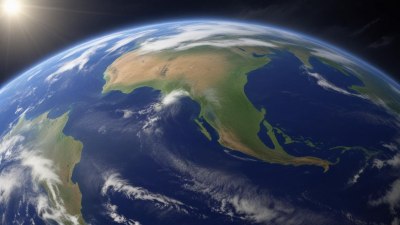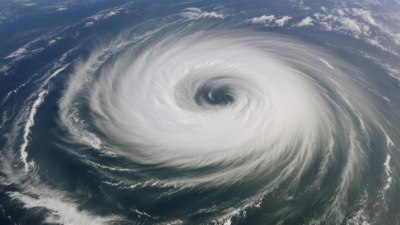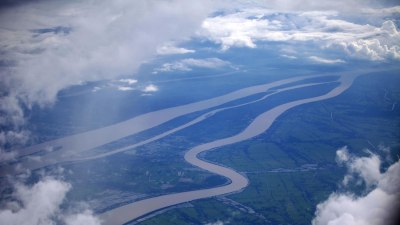How the Earth’s Rotation Shapes Weather
Explore how Earth's rotation influences weather patterns and climate globally.

This image was created with the assistance of Freepik
The Earth's rotation is a fundamental aspect of our planet's dynamics, influencing various processes that shape the climate and weather patterns we experience daily. Understanding how the Earth's rotation affects different atmospheric phenomena is crucial not only for meteorologists but also for anyone interested in the way weather operates. This article aims to explore the intricate relationship between the Earth’s rotation and weather patterns including the Coriolis effect, the formation of trade winds, the development of cyclones, and more.
The Basics of Earth's Rotation
The Earth rotates on its axis approximately once every 24 hours. This axial rotation is counterclockwise when viewed from above the North Pole and leads to the cycle of day and night. The speed of rotation varies depending on latitude; at the equator, the rotational speed is about 1670 kilometers per hour (or roughly 1037 miles per hour), while at the poles, the speed is effectively zero. This rotation plays a critical role in distributing solar energy, which in turn drives weather systems.
The Coriolis Effect
One of the most significant ways that Earth's rotation influences weather is through the Coriolis effect. This phenomenon arises due to the rotation of the Earth and causes moving air and water to turn and twist rather than traveling in straight lines. In the Northern Hemisphere, the Coriolis effect causes winds to curve to the right, while in the Southern Hemisphere, it turns to the left.
The Coriolis effect is crucial for the development of large-scale wind patterns and ocean currents. Without this effect, straight-line wind patterns would dominate, leading to less localized weather systems. For example, mid-latitude cyclones are heavily influenced by the Coriolis effect, which helps create their characteristic rotation patterns. The result is a complex interplay between pressure systems that leads to varying local weather conditions.
Trade Winds and Their Formation
The rotation of the Earth also plays a vital role in the formation of trade winds. As warm air rises near the equator, it creates a low-pressure area. Cooler air from higher latitudes moves in to replace it, resulting in wind. However, due to the Coriolis effect caused by Earth's rotation, these winds do not blow directly from high-pressure to low-pressure areas. Instead, they curve, leading to the formation of the Northeast and Southeast trade winds.
These trade winds are essential for tropical weather patterns and the ocean's circulation system. They help drive ocean currents, distributing heat and moisture across the planet. As warm water is pushed towards the western sides of the oceans, regions like the Caribbean and some Pacific islands experience increased precipitation as a result.
Global Climate Patterns
The ongoing rotation of the Earth contributes to the development of global climate patterns, such as El Niño and La Niña, which have profound impacts on global weather. During an El Niño event, trade winds weaken, and warm ocean water accumulates in the central and eastern Pacific, leading to widespread changes in weather patterns across the globe. Conversely, a La Niña event strengthens trade winds, cooler surface waters, and alters patterns in storm activity and precipitation.
These climate phenomena are excellent examples of how interconnected Earth's rotation, wind patterns, and ocean currents influence global weather. Investigating these patterns aids scientists in predicting weather changes and preparing for potential impacts on food supply and disaster preparedness.
Storm Systems and Rotational Dynamics
Storm systems such as hurricanes, typhoons, and cyclones are also intimately linked to the Earth's rotation. These systems form over warm ocean waters when conditions are right, usually when water temperature exceeds 26 degrees Celsius (79 degrees Fahrenheit). One crucial factor in their development is the Coriolis effect; hurricanes need a certain amount of rotation to develop and amplify.
In the Atlantic Ocean, hurricanes typically form in the tropics and move westward due to trade winds. As they approach land, they can cause extreme weather events like heavy rain, strong winds, and storm surges. The Earth's rotation can influence this path, with cyclones turning and spiraling in a characteristic way. Meteorologists use this knowledge to predict storm tracks and intensity, which is critical for issuing timely warnings to populations in affected areas.
The Role of the Jet Stream
The polar jet stream is another important aspect of Earth's rotation that affects weather. The jet stream is a high-altitude wind that flows from west to east around the globe, often causing shifts in temperature and storm tracks. It is influenced by the Earth's rotation as well as temperature differences between the equator and the poles.
When the jet stream is strong, it tends to produce more extreme weather patterns, including variations in temperature and precipitation across regions. When it is weak, the weather can become more stable, leading to prolonged periods of warm or cold weather. Understanding these dynamics allows meteorologists to make more accurate weather forecasts.
Seasonal Changes and Earth's Tilt
While the rotation of the Earth is continuously in motion, its axial tilt of approximately 23.5 degrees combined with rotation leads to seasonal changes. As the Earth orbits the sun, different areas receive varying amounts of solar energy, resulting in seasonal variations in weather conditions.
This axial tilt, along with the Coriolis effect, influences patterns such as the monsoon seasons in Asia and Africa. During these periods, the contrast between land and sea temperatures leads to robust wind patterns that significantly impact precipitation distribution and weather across large regions.
In summary, the Earth's rotation plays a pivotal role in shaping the weather and climate we experience on our planet. The Coriolis effect, trade winds, storm systems, and the integration of various weather patterns provide a comprehensive framework for understanding global weather dynamics. As we continue to study these interactions and their consequences, we enhance our ability to predict weather and respond to the challenges posed by climate change. A deeper comprehension of these patterns can ultimately lead to better preparedness and resilience in the face of an ever-changing climate.











